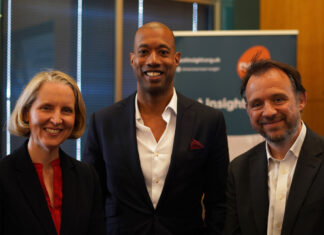In this guest blog, David John from the AARP Public Policy Institute tells us more about their work exploring what people need and want from a rainy day savings account:
Financial emergencies are a fact of life, but shockingly few Americans are prepared for them. For example, in one survey 60 per cent of American households reported experiencing a financial shock in the past 12 months with a median cost of $2,000.1 In another, almost half (46 per cent) of adults said that they don’t have $400 in cash savings to cover an emergency, and would have to borrow money or sell something to cover such an expense.2
Researchers on both sides of the Atlantic are working to design a payroll-deduction savings account that would make it easier for people to have money in emergencies. These accounts could be provided through employers in parallel with retirement savings accounts or they could be free-standing and available to contingent workers also. As part of that effort, AARP is conducting a two-part project to understand what individuals need and want to see in such an account. In the first stage, AARP conducted focus groups in November 2017. That is being followed by a large quantitative survey the results of which should be published in fall 2018.
Here are some insights from the focus groups:
- Details are essential: People immediately had a host of questions about the account, and if answers weren’t immediately available, some started to assume the accounts had high fees, paid no interest, or in some other way would be structured to the disadvantage of workers. That influenced others, who became suspicious and sceptical. It helps if the rainy day account is structured similarly to a bank account that people know and understand.
- Why is my employer doing this? Right from the start, people wanted to know why the employer would offer such a plan. Some felt that the company was trying to get money from employees to use for its own benefit or to spy on employee finances. Information on employer motives needs to be provided and discussed immediately.
- What about my privacy? Focus group participants were very concerned that the employer would know how much was in the account, when withdrawals were taken and why. No one wanted employers to know their private business. Keeping the money in a bank or similar financial institution in an account accessible only by the saver is important.
- Is this my property? Individuals wanted to be sure that this was their money, and that the employer could not use it. If they left that employer, they wanted to be sure they could take the money with them rather than leaving it behind.
- Interest rates are sort of important: Before an employer match was mentioned (see below), several people said they would only participate if the accounts paid a fairly high interest rate. However, once they learned that those interest rates required risky investments that could reduce the size of the account, most opted for safety instead.
- An employer match helps: Providing some level of employer match of savings eliminated almost all reservations about the accounts and resulted in almost everyone wanting to participate.
- Call it a rainy day account: Some researchers have called this savings structure a sidecar account because initially they were intended to be paired with retirement savings accounts. Except for a few motorcycle enthusiasts, few people know what “sidecar account” means. They do know what a rainy day account is, and like that name.
This is important work. More than half of households struggled to make ends meet after their most expensive financial shock.1 Rainy day accounts could help make those shocks less damaging, but only if they offer what potential savers actually want.
David John, senior strategic policy advisor at the AARP Public Policy Institute
Find out more about the AARP Public Policy Institute here.
- The Pew Charitable Trusts (2015) The role of emergency savings in family financial security: How do families cope with financial shocks? Available here.
- Mui, Y. Q. (2016) The shocking number of Americans who can’t cover a $400 expense. The Washington Post. Available here.







